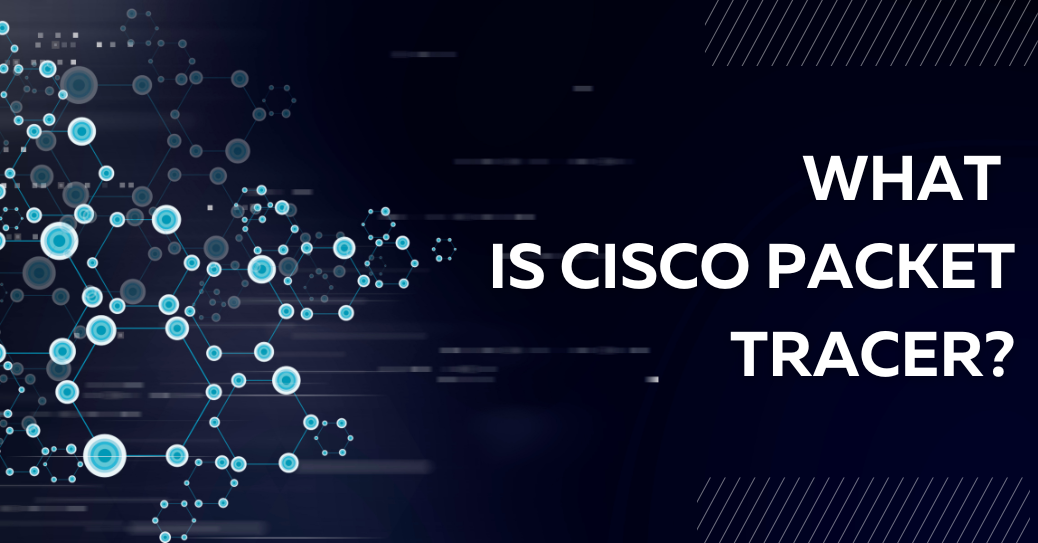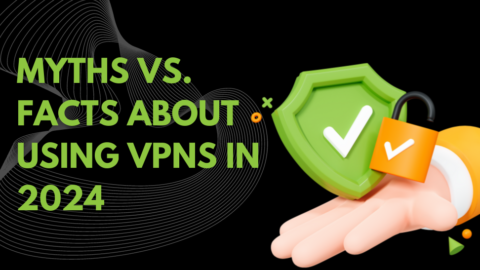Cisco Packet Tracer is one of the most potent network simulation tools developed by Cisco Systems to enable students, educators, and even networking professionals. It is used to create, configure, and troubleshoot complex network environments without the risk involved in a full-fledged laboratory. An easy-to-understand graphical interface allows one to experiment with networking concepts, practice CCNA and CCNP configurations, and simulate real-world networking scenarios without costly hardware.
It provides support for an exceptionally vast array of core networks, devices, protocols, and generation-to-generation topologies, thereby being a core room for learning, teaching, and testing a network design as well as academic knowledge and professional development skills. Indeed, the Cisco Packet Tracer imparts an interactive and hands-on manner of experiencing networking palates.
What is a Cisco Packet Tracer?
With its high flexibility, the Cisco Packet Tracer is an efficient cross-platform network simulation tool for designing, simulating, and testing network configurations. The tool supports a wide range of Cisco devices, such as routers, switches, firewalls, and IoT components, making it critical to train students engaged in network engineering and cybersecurity programs. Packet Tracer is a hands-on learning experience that provides practicality in mastering network technologies and is thus very useful for students, teachers, and others working in IT.
Cisco Packet Tracer is a well-adapted multi-platform network simulation device designed to establish, simulate, and test network configurations using simple tools. The interactive interface allows a user to engage with real-world networking scenarios, troubleshoot configuration problems, and acquire critical hands-on networking skills without causing one to spend lots of money on expensive physical hardware. This hands-on learning experience makes it very practical for mastering networking technologies and valuable for students, teachers, and others working in IT.
History and Development
The Cisco Packet Tracer is not that effective without the training courses. Initially in 2003, it was birthed as part of Cisco’s Networking Academy program, but it has grown into a powerful network simulation tool. Building upon the years, its upgrades will incorporate support for emerging technologies such as IoT, wireless networking, and cloud-based configurations. Further versions will keep improving the user’s experience with enhanced simulation ability, broad device support, and a more intuitive interface.
Features of Cisco Packet Tracer
- Graphical User Interface (GUI): A drag-and-drop interface allowing users to easily add and configure network devices.
- Support for multiple protocols: TCP/IP, OSPF, EIGRP, STP, DHCP, and many more.
- Integration of IoT: Ability to simulate smart devices and automation scenarios.
- Multi-User Collaboration: Enabling simultaneous work of several users on the same project.
- Packet Analysis: Network packet visualization describes data packets moving through the network.
- Evaluation With Learning Modes: Built-in tutorials, quizzes, and troubleshooting exercises.
- Cross-Platform Availability: Working on Windows, macOS, or Linux.
Benefits of Using Cisco Packet Tracer
- Hands-On Learning: Students and professionals can practice their ideas in a simulated environment.
- Safe Testing Ground: Try configurations and security without any real-world implications.
- Industry-Relevant Skills: Prepares users for Cisco certification, such as CCNA and CCNP.
How to Download and Install Cisco Packet Tracer
- Go to the official Cisco Networking Academy page.
- Create a free account.
- Go to the packet tracer download section.
- Choose your operating system version.
- Install and open the software.
You can also visit this article to download Cisco Packet Tracer.
Getting Started with Cisco Packet Tracer
After installation, follow these steps:
- Open Packet Tracer.
- Select “New Network” to begin a project.
- Drag devices like routers and switches onto the workspace.
- Connect the devices using cables (Copper Straight-Through, Cross-Over, Fiber, etc.).
- Configure devices using the CLI (Command Line Interface).
- Run your simulations, then analyze data packet flow. With the help of the creating network, this machine is set to command the various components.
Common Networking Scenarios in Packet Tracer
- Basic Network Topology Setup: Configuring small LAN networks.
- Routing Protocols: Implementing RIP, OSPF, and EIGRP.
- Switching Concepts: VLANs, Spanning Tree Protocol (STP), and Port Security.
- Security Configurations: Setting up ACLs (Access Control Lists) and firewalls.
- IoT Networks: Integrating smart devices like sensors and actuators.
Advanced Features and Applications
1. IoT and Smart Network Simulation
Cisco Packet Tracer provides an environment for simulating IoT devices, thus allowing the simulation of innovative technologies used today. Be it home automation, industrial IoT, or smart city infrastructure, users can connect sensors, controllers, and other smart devices to see how they behave within a networked environment. This exposure can help students and professionals understand how IoT operates with real-world scenarios and, in turn, bridge the gap from theory to practical implementation.
2. Wireless Network Configuration
With Packet Tracer, users can design and test wireless networks, configuring all configuration settings from the SSID to the security settings using encryption techniques like WPA2. It can provide for network coverage, signal interference, and access control. By exposing learners to simulations of different wireless environments, these students can develop a solid foundation in Wi-Fi technology and security best practices without needing the physical piece of networking equipment.
3. Network Security and Cybersecurity Training
For people interested in cybersecurity, Packet Tracer provides a virtual arena for hands-on firewall configuration, intrusion prevention systems, and VPN setups. The users can simulate various threats to security and try to figure out methods of counteracting them while observing how networks respond to different types of cyberattacks.
4. Cloud Computing Integration
Students will use this feature to learn about private, public, and hybrid cloud modeling and how companies utilize cloud resources to enhance network performance. Cloud experiments will expose users to 21st-century networking concepts while preparing them for careers in cloud-based infrastructure management.
Cisco Packet Tracer vs. Other Network Simulators
| Feature | Cisco Packet Tracer | GNS3 | EVE-NG | NS3 |
|---|---|---|---|---|
| User-Friendly Interface | Yes | No | No | No |
| Cisco Device Support | Yes | Yes | Yes | No |
| IoT and Smart Devices | Yes | No | No | No |
| Multi-User Collaboration | Yes | No | No | No |
| Free to Use | Yes | Limited | Limited | Yes |
Cisco Packet Tracer for Certifications
Cisco Packet Tracer renders many certifications necessary for training in Cisco itself. Chiefly among these are:
- CCNA (Cisco Certified Network Associate): Routing, switching, and security configuration.
- CCNP (Cisco Certified Network Professional): Specialized advanced networking components.
- CyberOps Associate: Cyber security simulated exercises.
Real-World Applications of Cisco Packet Tracer
- Educational Institutions: Used in universities and technical schools for networking courses.
- Corporate Training: Helps IT teams enhance their networking skills.
- Job Preparation: Assists candidates in practicing real-world networking problems before interviews.
- Network Design and Testing: Enables professionals to prototype network infrastructures before deployment.
Limitations of Cisco Packet Tracer
- Limited Hardware Support: Cannot replace real-world physical hardware experience.
- Simplified OS Behavior: Some advanced networking features are missing.
- Not Suitable for Production Networks: Primarily a learning tool rather than a real-world deployment solution.
Conclusion
You should qualify that the Cisco Packet Tracer tool is a hard-hitter for all networking professionals, students, and educators. It is a dynamic medium that permits designing, configuring, and troubleshooting complex environments in virtual spaces. Its ability to simulate real-world networking scenarios without considerable investments in expensive hardware renders it all the more invaluable to anybody seeking a life in networking, an equally great path in cybersecurity, and the safest way in IT infrastructure management. The software lets you pick a topology and mix and match routers, switches, and firewalls, letting you get honest with different protocol tryouts.
Packet Tracer has undergone many enhancements as Cisco integrated new features, i.e., IoT device simulation, wireless networking, and cloud-based topology configurations. Thus, it is helpful for students preparing themselves for certification exams such as CCNA and CCNP, while at the same time, it is beneficial to the other guys in the profession who are trying to polish their skills. It is designed to efficiently work for a beginner grasping a more comprehensive concept about networking solutions while at the same time having advanced simulation capabilities for the mature audience seeking in-depth, hands-on experience in network design and troubleshooting.












 Get survival, travelling and auto tips, follow new technology trends, entertainment stories and world events with PeekTimes.
Get survival, travelling and auto tips, follow new technology trends, entertainment stories and world events with PeekTimes.